Almost 60 years ago, the Dalai Lama escaped from Tibet and about 100,000 Tibetan people followed their God-King into exile. The struggle by the Tibetans to regain their much-romanticised homeland was cause célèbre for the decades that followed, launching the Dalai Lama and his exile-government known euphemistically as the Central Tibetan Administration (CTA) onto the world stage.
The Overplayed Victim Card
In 1989, the Dalai Lama was awarded the Nobel Peace Prize, which in no small part was evidence of how successfully he had managed to organise and amass a diverse international following. In many ways the Tibetan spiritual leader garnered as much if not more global support and did so over a longer period for the Tibetan struggle than Nelson Mendela ever received in his struggle against South Africa’s apartheid; Martin Luther King in his struggle against racial segregation in the US; and Aung San Suu Kyi in her struggle against Burma’s military government. For a long time, the world readily embraced the Tibetan leadership’s ethos and rhetoric but the CTA never did much, even with this high level of attention and support, other than lend its name to another hip live concert, open yet another ‘Tibet house’ to raise funds for yet another Tibet-related campaign, and issue toothless proclamations against China aimed at tugging at the collective heartstrings of the young global left-wingers.
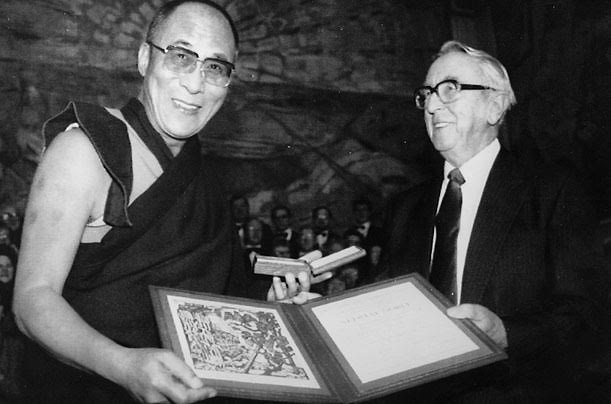
In 1989, the Dalai Lama was awarded the Nobel Peace Prize. In recent years the spiritual leader’s award has come under question as news of the Dalai Lama’s secret CIA-sponsored wars against China are uncovered.
So successful were the many Tibet-related campaigns that the Tibetan people became the world’s most well known refugees. But in retrospect the ‘Tibetan Cause’ was nothing more than a financial enterprise and the people continued to suffer without any improvement in their living standards or direction in their struggle. CTA intra-politics and self-aggrandizement dominated the Tibetan leadership’s minds carelessly, they allowed themselves to forget an important dictum in politics – there are no permanent friends and no permanent enemies, only permanent interests. And so over time, the Tibetan freedom movement was allowed to become dated, outworn and without a firm conviction as to what it truly is, and soon the world moved on to other more serious and pragmatic issues. This is significantly due to the global shift in power towards favouring the nemesis of the CTA, China, but this phenomenon was not an overnight event. Put simply, the CTA failed monumentally in building on the trust and support afforded it for decades and instead overplayed its part as victim and offered virtually no benefits to any nation to continue supporting it.
The World Rejects The CTA
Today there are clear signs that the CTA has missed its boat and far from being the celebrated movement that it had been, the Tibetan cause has now become a great and costly political inconvenience. This is clear on the international front as it becomes de rigueur for nations of the world to distance themselves from having any close association with the Dalai Lama and CTA.
The United Kingdom for instance has for decades welcomed the Dalai Lama and on quite a number of occasions lectured China on her need to change politically and adopt a more Western attitude towards governance. But in the year 2013, that remarkably changed and in the words of No. 10 Downing Street, “We have turned a page on that [Tibetan] issue. It is about the future and how we want to shift UK-China relations up a gear.” The CTA has been dumped by an important ally.
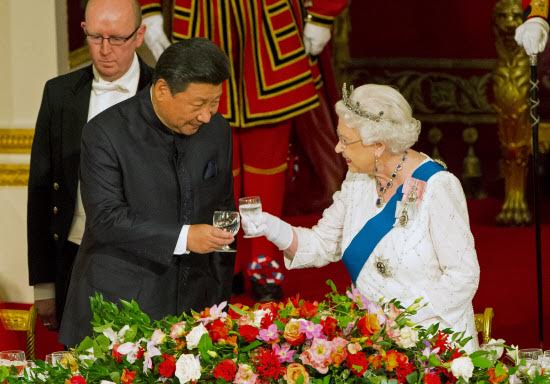
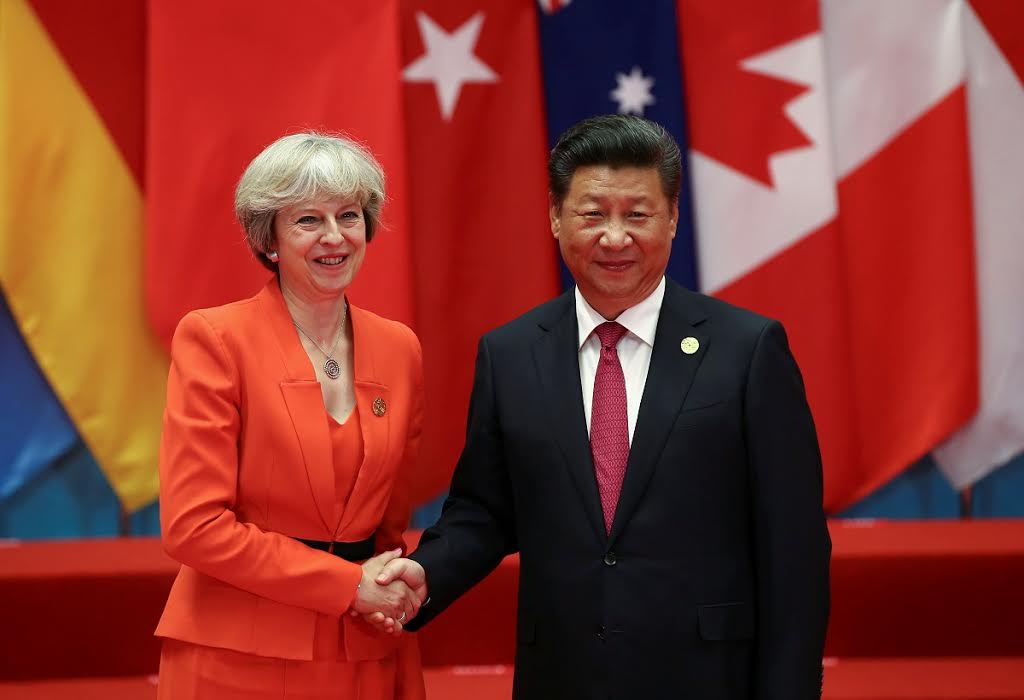
The British Monarchy as well as Government have decided that China is to be a friend to the country.
South Africa was once a nation of people who were disarmed and enslaved, and there was a moral angle for the CTA to seek the support of the South African government. And yet in the year 2014, the South African government denied an application by the Dalai Lama to attend the 14th World Summit of Nobel Peace Laureates held in Cape Town. That was the third time the country officially blocked the Dalai Lama from setting foot on its soil, the first time being in 2009 and again in 2011 when the Dalai Lama applied for a visa to enter the country to celebrate the 80th birthday of Archbishop Desmond Tutu and was flatly rejected.
India on its part has been the bedrock upon which the CTA, hence the Tibetan freedom movement, has endured for all this time. And as long as India provides a safe home base for the CTA to operate, it has a chance. In 2016 however, after 57 years of friendship, during which time the Tibetan leadership did not hesitate to continually test Sino-Indian relationships by attacking China whilst standing on Indian soil, a secret deal was rumored to have been struck – China agreed to refrain from laying claims to several Indian territories such as Arunachal Pradesh, Sikkim, and parts of Jammu and Kashmir. In consideration, India would not welcome and provide refuge to any more Tibetan exiles after a certain date. In essence, India had agreed to an expiry date for its support to the Tibetan leadership.
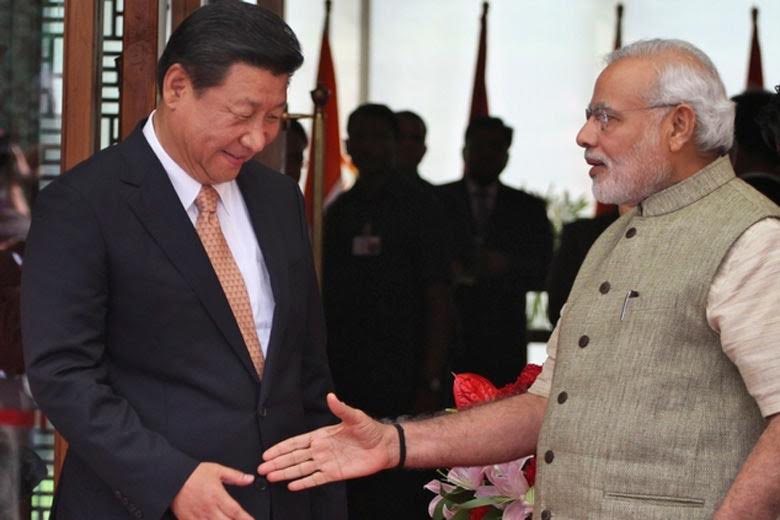
Hosting the Tibetan refugees has come at a great cost to India but a deal has been struck.
The years 2016 and 2017 would mark the beginning of the end for the Tibetan struggle and by default the reason for the CTA to exist. Never before had the need for old allies to distance themselves from the Tibetan leadership been more pronounced than in the case of Mongolia banning the Dalai Lama from ever visiting the country again, at least not during the present government’s administration.
The Mongolian decision was a clear indication as to how much a liability any association with the Tibetan leadership has become. The state religion of Mongolia is deeply rooted in the lineage of the Dalai Lamas and since the 1500’s the Mongols and the Dalai Lamas have maintained a close priest-patron bond, which unraveled in December of 2016 when Mongolia officially turned its back on the Tibetan leadership.
But that would not be the end of the CTA’s woes. For decades, Switzerland, known to be a defender of human rights, and hence a natural ally to the CTA’s anti-China rhetoric, has allowed Tibetans to identify themselves as the citizens of “Tibet” or “Stateless.” The alpine state was in fact home to the largest community of Tibetans-in-exile in Europe. But that all changed in February 2017 when the government’s revision in immigration policy required Tibetans residing in Switzerland to change their nationality to “Chinese”. This was a huge blow to the CTA because under its banner, the Tibetans-in-exile no longer have an identity or validity as a citizen of the world, at least not in Switzerland.
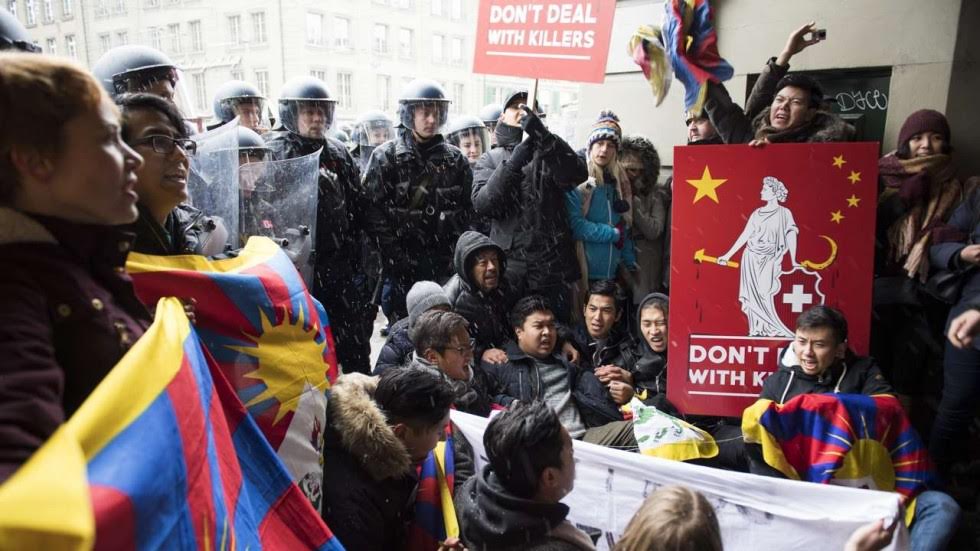
In January 2017, Swiss police detained 32 Tibetan protesters during President Xi Jinping’s visit.
The CTA’s international standing deteriorated even further when in April 2017, Sweden rejected the Tibetan travel document known as the ‘Yellow Book’, issued by the Indian government to Tibetan refuges enabling them to travel abroad. Just as the passport or travel document issued by a government of a country certifies the identity and nationality of the holder, the Swedish government’s rejection of the Tibetan Yellow Book rejects the CTA as a legitimate government and Tibetans-in-exile as having any true and legal nationality.
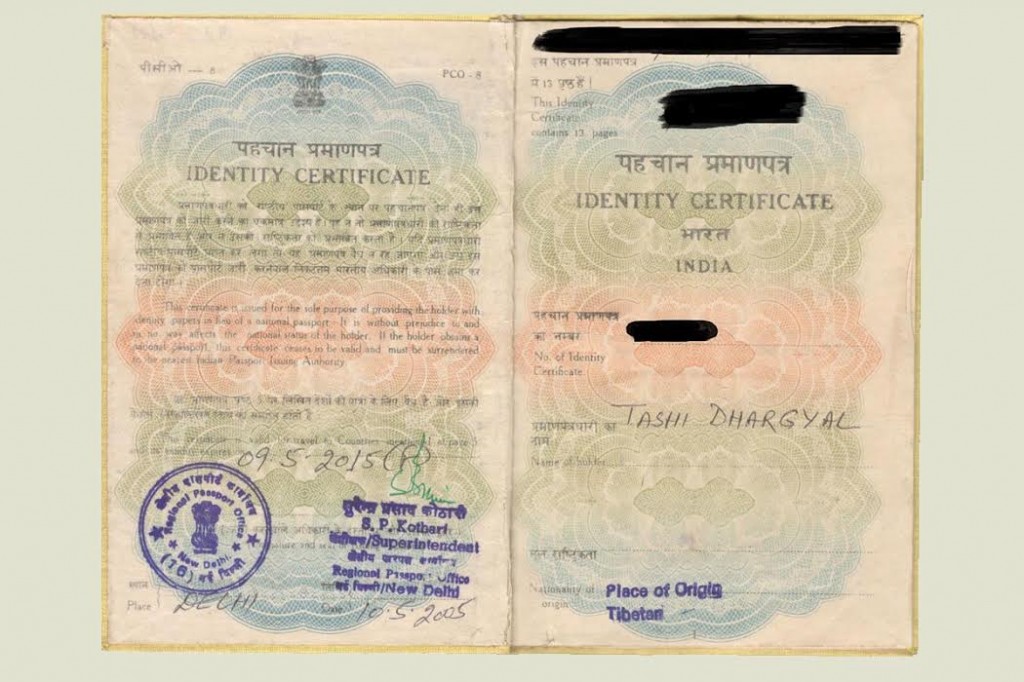
The ‘Yellow Book’ or Tibetan Identity Card that serves as the exile Tibetan’s travel documents are no longer valid in Sweden.
With each country’s change of policy towards the Tibetan people, the CTA is diminished even more. The biggest blow to the CTA may yet come from its erstwhile friend and strongest supporter, the United States of America. Recent Presidents of the US have been willing to defy Beijing and had not hesitated to meet the Dalai Lama as a head of state. However America, now under the Trump Presidency, seems more interested in building a pragmatic alliance with China than taking an ideological stance on the Tibetan issue. President Trump has openly declared his friendship with Present Xi Jinping and admiration of the Chinese leader. And if that is to be taken to be setting the tone for the US’s attitude towards Tibet, then it is unlikely that America will avail itself as the CTA’s crutch for much longer.
In the meantime the lists of world leaders that are stiff-arming the Tibetan leadership keeps increasing and include the governments of Russia, Denmark and Norway, who have refused to meet with the Dalai Lama. And that is not to mention Pope Francis, the incumbent head of the worldwide Catholic Church. The Dalai Lama is also barred from entering a number of South East Asian countries like Thailand and Malaysia.
Internal Hemorrhaging
If the Tibetan leadership is bleeding from ruptured friendships externally, then it is beginning to hemorrhage internally at the same time. Nothing can disempower the Tibetan leadership more than the loss of trust and confidence of the Tibetan people. And perhaps the clearest indicator that the CTA is fast losing ground is the rising and increasingly open criticisms of the Tibetan leadership by its own disenchanted populace. Culturally the Tibetan people regard a single person, the Dalai Lama, as the greatest benefactor and master without whom there cannot be any secular or spiritual well-being. Unquestioning piety to the Dalai Lama is the norm and expected of all ‘loyal’ Tibetans. Obedience to the spiritual leader and hence his chosen government becomes the highest moral code and, not to swear allegiance to the Dalai Lama and his government is regarded as an act of treason.
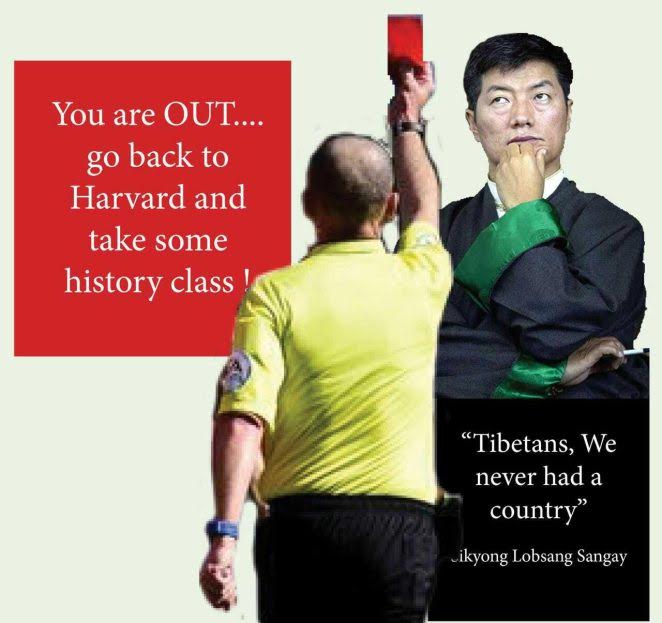
Tibetan poster rejecting Sikyong Lobsang Sangay of the CTA.
In the name of the Dalai Lama, the CTA was able to enforce a form of absolutism over the Tibetans-in-exile. It was not at all difficult because Tibet was after all a feudal theocracy prior to 1959 and whilst the CTA publicly promulgated the notion of freedom and democracy, it was able to exact a form of oppression over its own people by the use of physical as well as ideological control at the community level, often enforced by mobs with jingoistic bigotry that the CTA secretly backs.
A good example is the existence of ‘The Secret Society of Eliminators of the External and Internal Enemies of Tibet’ a self-styled taskmaster of the Tibetan leadership’s diktats. In 1996, the Dalai Lama issued an unconstitutional decree banning the worship of a Tibetan Buddhist deity (Dorje Shugden) whose practitioners he regarded to be a nuisance to his control of the Tibetan people. The CTA duly used its Parliament and Cabinet to criminalise the religious practice. And The Secret Society of Eliminators of the External and Internal Enemies of Tibet boldly announced, “Anyone who goes against the policy of the government must be singled out, opposed and given the death penalty”.
These warnings are not merely empty threats and the CTA have been known to resort to violence to subdue critics. Kundeling, a retired Tibetan minister was stabbed multiple times and seriously injured after he publicly voiced his concerns over some of the CTA’s underhanded methods. The attack on Kundeling and other similar cases were constant reminders to all that it is both criminal and blasphemous to question the Dalai Lama and his government.
Earlier on, in 1964 when the Dalai Lama’s brother and members of the Tibetan elite sought to abolish the various Tibetan Buddhist schools as a means of usurping spiritual authority from the heads of these schools, the Tibetan people objected and formed an alliance known as ‘Fourteen Settlements’. A prominent head of the alliance by the name of Gungthang Tsultrim was assassinated at close range and a timely power supply cut aided the assassin’s escape. When caught, the assassin confessed that he was carrying out a job on the orders of the Tibetan cabinet.
When Tsultrim Kalsang Khangkar, a Tibetan academic residing in Japan was accused of criticising the Tibetan leadership, a vicious hate-mail campaign was commissioned to be directed at him. The late Professor Dawa Norbu encountered his fair share of death threats and physical violence for certain views he voiced in the Tibetan Review, deemed uncomplimentary to the Dalai Lama and Tibetan leadership.
Real Democracy Vs CTA’s Absolutism
And so the Tibetan community in exile have every reason to be afraid and this culture of fear has kept the CTA unchecked and unaccountable to anyone since its formation. But if history has taught us anything it is that there comes a time when the people get tired of being pushed around and continually plunged into an abyss of hopelessness and despair. Over half a century of broken promises, unabashed corruption amongst the ruling elite, blatant double standards, gross incompetence of the politicians, and the realisation that the leadership has squandered every opportunity it had to realise the Tibetan dream, has led the Tibetan people to begin openly voicing their disillusionment with the Tibetan leadership, as they have had enough.
Whilst there have been sporadic criticisms of the CTA before by activists such as Jamyang Norbu, the CTA has been quick to neutralize his opinions by stigmatising him as a Dalai Lama hater and that his views make him a traitor to the Tibetans. Essentially the CTA successfully managed to turn Norbu and other critics into outcasts whose ideas and writings are to be rejected by all loyal Tibetans.
It may be easy for the CTA to brand a few critics living away from the exile community as apostates who should be shunned, but when young Tibetans, clearly without any political agenda, question the Tibetan leadership in their naiveté and out of honest curiosity, it is much more difficult for the CTA to demonize them. This was precisely what happened in June 2014 when Sikyong Lobsang Sangay took to a Tibetan school in the Tibetan Children’s Village in what was really a show staged to illustrate the Sikyong’s “openness and liberal mentality”.
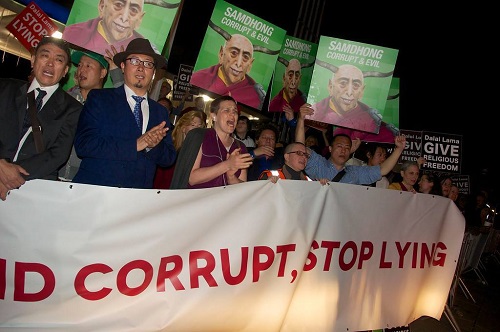
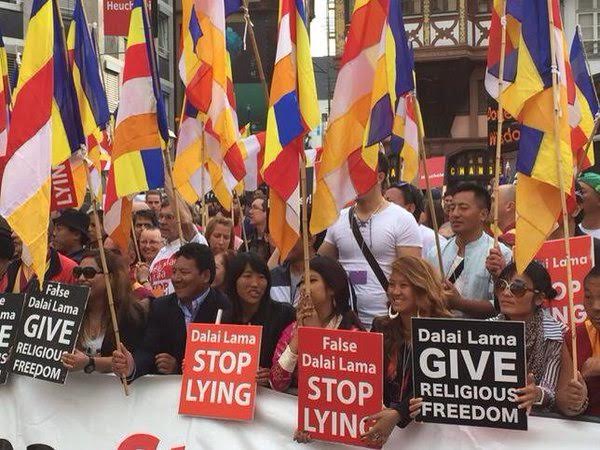
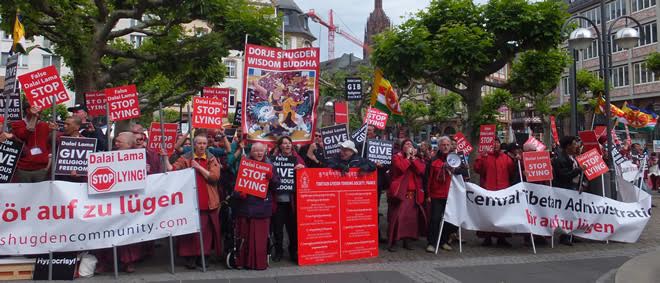
Increasing protests against the Dalai Lama and CTA to cease in their oppressive ways and methods to control the Tibetan people.
As the students probed the Sikyong and raised issues of inequality faced by fellow students from households that worshiped Dorje Shugden that the CTA banned but was in denial of, it became clear that even young Tibetan school children could see through the CTA’s veneer and that the CTA’s days of commanding blind obedience was over.
And if anyone needed more evidence for this, then it came in 2017 in response to another hate-campaign the Sikyong Lobsang Sangay instigated against Lukar Jam, a popular candidate for the 2016 Sikyong election whom some say was engineered out of contention. That in turn motivated a member of the Tibetan parliament to call for Lukar to be ostracized as the CTA had done to believers of Dorje Shugden, and many others that the CTA had falsely declared to be enemies of Tibet. See from 1:50:
Lukar Jam represented a serious threat to the Tibetan establishment because he was not afraid to voice his thoughts about what needed to change for the Tibetan community. Lukar’s views were different and he had his own opinions, some of which were not complimentary to the old guard. And so when Lukar Jam wrote a harmless poem of farewell to his friend the late Professor Elliot Sperling, Lobsang Sangay, as the CTA had done many times, twisted the eulogy into an anti-Dalai Lama piece.
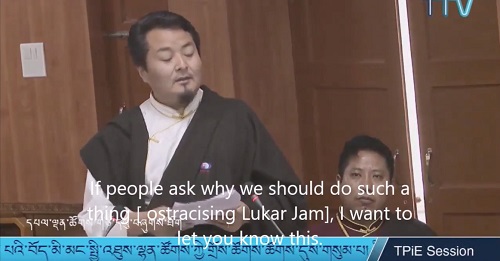
A Tibetan Parliamentarian using state instruments to persecute the common Tibetan people. Ostracizing victims is one of the more common ways for the CTA to deal with its critics. This alone shows that ‘Tibetan democracy’ is a farce.
Another CTA-inspired hate-campaign was spawned and Lukar’s family were threatened and the family car vandalized. But what ensued came as a surprise to all. Instead of recoiling in fear or joining the anti-Lukar chorus, the Tibetan people both in the exile towns as well as those living abroad instead came out in defense of, not so much Lukar, but his right to expression.
Twenty six Tibetan “students and researchers” wrote an Open Letter to politely but firmly condemn the attempt to defame Lukar and stated amongst other things that,
“…we are not just particularly concerned about Lukar Jam as an individual per se, which is no less important, rather we feel a sense of responsibility towards the overall democratic space in exile and the global image of HH the Dalai Lama. We urge all Tibetans in general and particularly the members of civil society such as researchers, writers, students and public intellectuals to come forward an engage in safeguarding the democratic space…”
What is noteworthy about the Open Letter is the fact that the Tibetan people are no longer afraid to think for themselves and have decided that they wish to live in liberal society, not the counterfeit democracy that the CTA operates, and that the common people are now ready to accept the responsibility of protecting this freedom. This was a peaceful call to arms to stand up for freedom and democracy, and if democracy is to come about then it must be at the cost of the Tibetan leadership’s often tyrannical autocracy.

Open Letter by Tibetan students calling for the people to safeguard democracy. Click to enlarge
The Open Letter was published on the Tibet Sun website, an English language news portal based in Dharamsala, India, where the Dalai Lama resides and where the CTA is headquartered. A few days later, the news piece mysteriously disappeared from the Tibet Sun website. It is unknown why the Open Letter was taken down but not before the letter set off a string of comments and opinions by Tibetans in India and abroad calling for people’s rights to be upheld. Democracy finally arrived and the people spoke.
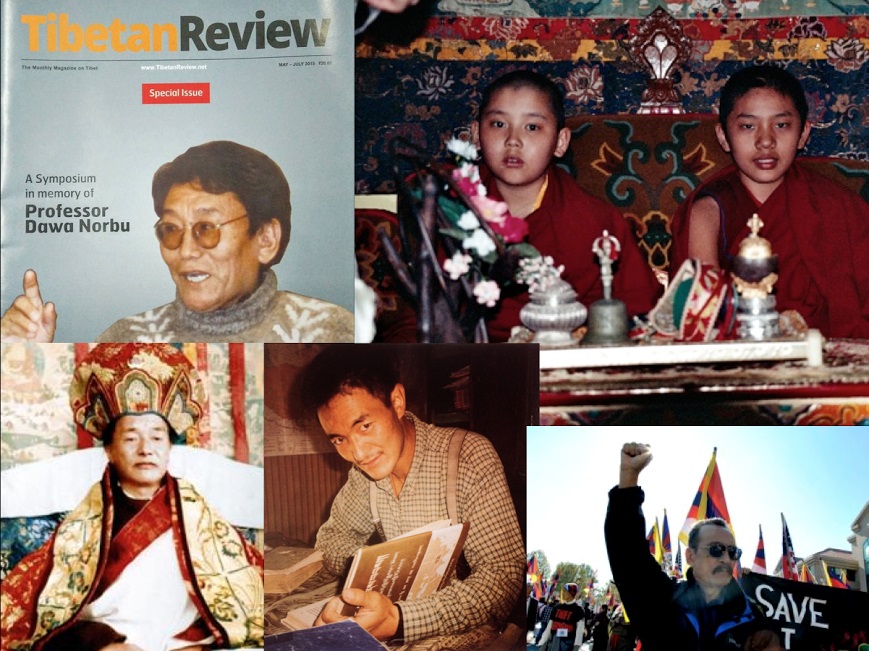
Some of the victims of the CTA’s persecutions. From top left, the late Professor Dawa Norbu whose wish for democracy was a threat to the CTA; bottom left, the Tibetan Master Dudjom Rinpoche was declared an enemy of the Tibetan people and imprisoned due to his popularity; bottom middle, Lukar Jam a hero of the Tibetan people and popular candidate of the 2016 Sikyong elections and now the target of the CTA’s attacks; bottom right, the illustrious writer and activist Jamyang Norbu was stigmatized by the CTA for his writings on democracy; and top right, Trijang Choktrul Rinpoche (right) who as a boy had to flee for his life from the CTA.
In response, ‘Students For Lukar Jam’ wrote Are Lukar Jam’s critics trying to damage his reputation?, as a Letter to the Editor of the Tibet Sun website, and in one single letter:
(i) Called out the double standards that the CTA has been practicing:
“Samdhong Rinpoche [ex Prime Minister of the CTA] once said those who make uncalled-for noises carrying Rangzen on their lips were worse than Chinese communists and Shugden followers. Unfortunately, there’s no hue and cry against Rinpoche’s proclamation, which if pronounced in a free society like America, would have garnered torrents of rebuttals. If analysed impartially, there is nothing to suggest that Lukar Jam’s ‘traitor’ comment is in principle any different from Samdhong Rinpoche’s ‘Chinese communist/Shugden’ comment. You have stated Mr Jam’s comment hurt the sentiment of many Tibetans. But by the same token, don’t you believe Samdhong Rinpoche’s comment has similarly hurt many freedom-loving Tibetans and Tibet supporters alike”?
(ii) Alluded to the fact that both the Dalai Lama and the CTA are wrong in the way they banned a religion and have infringed on the people’s human rights in the Dorje Shugden issue:
“The way to deal with the Shugden issue is to guarantee freedom of religion to its practitioners and separate it from politics altogether”.
(iii) Directly compared the Tibetan leadership-in-exile to that of dictatorial regimes:
“What is the difference between ‘attacking’ the Dalai Lama and ‘criticising’ the Dalai Lama? If he means criticism, then the answer to his anguished puzzlement is easy. He is criticising Dalai Lama because he found reasons to criticise. Show me a single democratic nation where criticism of the leaders is not allowed? I will show you a basketful of states banning criticism of its leaders: North Korea, Sudan, Eritrea, Iran, Iraq, Syria. You get the idea. Just as apostles of the Middle-path policy have the right to speak, and say Rangzen followers are ‘more dangerous than Chinese Communists’, Independence champions have the equal right to speak, and say Middle-path followers are ‘traitors’. Failing to acknowledge this irony and gap in logic is but an indicator of entrenched narcissism”.
Note: What is important to note here is not only that ‘Students For Lukar Jam’ felt compelled to express his views albeit anonymously, but also that Tibet Sun felt it was important to have the views of ‘Students For Lukar Jam’ published in the spirit of freedom of speech.
In Open letter to Sikyong on Mr Lukar Jam’s security, again part of the Letters to the Editor section of Tibet Sun, Sonam, a Tibetan in the USA wrote:
(i) Questioning if the Sikyong will uphold the people’s right to free speech since the CTA purports to be a democracy but in fact does not operate as one:
“Freedom of speech is the cornerstone of democracy. What is the value of free speech if the exile government condemn expressions by the public? What is the point of free speech if we draw a line in the sand and say, “Well, you have free speech. But you don’t have free speech if you say things we don’t like to hear.”?
(ii) Recognising that the CTA has shown no regard for the principles of democracy:
“By and large, what is an ongoing affair of Mr Jam is not an isolated incident, but is symptomatic of a larger, more pervasive trend in the exile diaspora. We want to educate children, we fight against lack of free speech in Tibet, we say we are a great democracy. But the record shows that the Tibetan community continues to have a very poor record in defending the free speech of our intellectuals and thinkers. We have in the past 60 years managed to produce only a handful of intellectuals, but weird as it may sound, the Tibetan government in exile seem to have no respect for any of them. Remember Dawa Norbu. Remember Jamayang Norbu. Remember Lukar Jam. In the western democracies, the governments routinely protect outspoken individuals whose views are at odds with the larger public, and it is deemed the positive obligation of the state to give protection”.
(iii) Stating a fact that those who do not toe the Tibetan leadership’s line are often met with violence and harm:
“But who is going to protect Mr Jam if physical attacks happen against him? Judging by the hue and cry surrounding his controversial Facebook post, a real risk to his life can not be ruled out.
I am writing, your honour, to ask if you could guarantee that Mr Jam’s constitutional freedoms will protected at any cost, and that he be provided personal security against vigilante attacks. In the event that protection is refused, then a group of activists will approach the Indian government for his security”.
Similarly in Jigme Wangchuk’s Lukar Jam Atsok, The ‘People-Elected’ Opponent of The Dalai Lama, on the Tibetan Journal website, he wrote:
(i) That pressure from the CTA is tantamount to gagging free speech which is necessary for the process of democracy to mature:
“Direct criticisms from the Tibetan Prime Minister’s office have not made it easier for critiques and writers to voice their concerns about the movement”.
(ii) That the CTA’s behaviour towards the Tibetan people’s freedom is no different to that of Chinese troops:
“When a writer like Lukar Jam criticizes the Middle Way policy, he has all the rights and sensibilities to share his own opinion on the matter no matter how disagreeable his views are. Criticising the Tibet policy is not anti-Dalai Lama, as is wishing that Sperling had gone on to live 113 years.
Attack on writers and critiques are akin to Chinese troops subjecting ‘separatists’ to imprisonment”.
And the comments go on, each one an erosion of the norms that have enshrined the Tibetan leadership’s oppression of the people for centuries. And so begins the process of evolution of the common Tibetan people, from a silent community living under the long shadows of their past serfdom to a people who are now aware of their rights and have finally found a voice to shatter the silence they have been subjected to by the CTA.
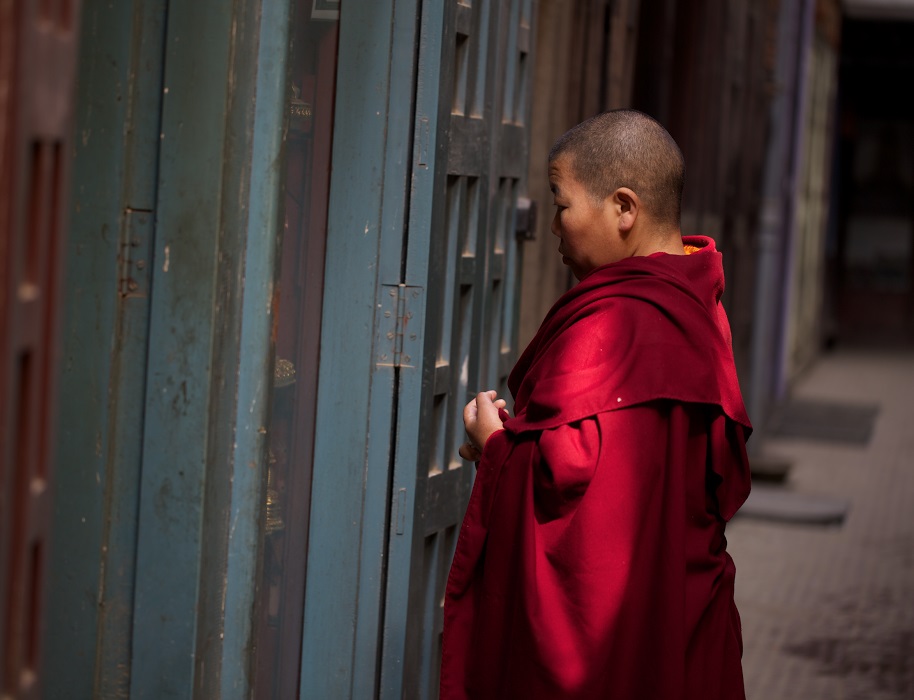
Doors are closing on the Tibetan cause due to half a century of corruption and mismanagement of the CTA.
A government is only potent if it has the trust and confidence of the people, or if it is prepared to subject its people to its will by sheer might and military force, or for as long as it can keep its people living in a hypnotic state and operating on expired hopes and borrowed memories. The third has been the CTA’s method that has worked wonderfully until now. The Tibetans in exile are now progressively third generation refugees who have seen how the people of the world live, how governments are called to account, and the difference between freedom and oppression. They have seen how the Tibetan exile community remain lost and without a recognisable or authentic identity – they are not citizens of Tibet, nor are they Chinese or indeed Indian. Following the CTA has resulted in three generations of loyal Tibetans living in a state of flux as CTA politicians enriched themselves on the gravy train fraudulently labelled the ‘Tibetan cause’. If the Tibetan leadership has failed to be of any value to nations who stand with it against China then it is failing to be of any relevance to its own people. As Sikyong Lobsang Sangay globe trots to peddle old and tired rhetoric, he is looking much less as a hero of a disenfranchised people and more like a ringmaster of a fast emptying menagerie.
MORE NEWS LIKE THIS